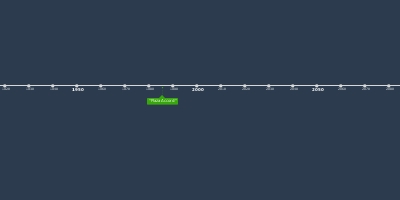sep 22, 1985 - The Plaza Accord and the Economic Bubble
Description:
The arsonist of the Kyoto Animation Arson, Aoba Shinji's personal development was closely related to Japan's economic situations. The period from 1990 to 2010 is characterized as the "Lost Twenty Years" of Japan when Japan was in the midst of a calamitous recession, which has had devastating destruction on Japanese society. Growing up under the period when the unemployment rate was sharply increased, Aoba was more or less as affected by the growing stress. Although Japan is still one of the most influential Asian countries today, the Plaza Accord marked the beginning of Japan's decline.Benefited from the post-world-war industrial developments, Japan became the most wealthy and advanced country in Asia by the 1970s. Western countries like the U.S. heavily depended on Japan's manufacturing and engineering industries, because the exchange rate between the US dollar and Japanese Yen was so high that American companies were at disadvantages when competing with Japanese companies. Moreover, inflation of US dollars caused by the Second Oil Crisis forced America to seek a way to revitalize its economy. As a result, the US advised increasing the exchange rate value of the US dollar versus Yen by 20%, because they assumed that American products could equally compete with the Japanese products internationally as long as the price differences were reduced. This proposal favored Japan too. Firstly, as a conquered nation of WWII, Japan heavily relied on America's political and military support, dissenting from this proposal could only endanger Japan's international position. Secondly, Japan needed US dollars to buy more oil. Japan imports all of the natural resources it needs, including oil, because of its geologic location. Yet the Second Oil Crisis led to a sharp increase in oil prices. Japan could not purchase enough fuel with the original exchange rate since oil is traded in US dollars. Japanese government readily accepted this advice, despite it might destroy Japan's small manufacturing companies. After only two years, Japan's foreign exchange market was totally out of control. The exchange rate value of the US dollar versus Yen was doubled. Thus many small companies went bankrupt. Japan's economy was seriously undermined. To slow down the pace of appreciation, starting in 1986, the Central Bank of Japan decreased the loan interest rate, expecting people to invest more money into the real economy, like manufacturing. But people already knew that the profit brought by the manufacturing industries was low. Instead, they invested all of their money into the stock market and housing market. By the end of the 1980s, the economy thrived, and people were richer than ever. However, all of these prosperities were just fragile and ephemeral bubbles. The Japanese economy was at the brink of collapse, yet nobody has realized that.
Added to timeline:
Date:
sep 22, 1985
Now
~ 40 years ago
